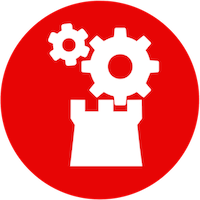01 Oct 2015
Do any of these sound like your thoughts or conversations?
- “The business relies on this old Notes application, but we have nobody who can maintain it for us.”
- “We’re migrating to Office 365, but we have no idea what we’re going to do with our Notes data and applications.”
- “Our Domino server is at capacity, but we can’t just delete stuff because we need that data.”
- “That database is mahoosive! Surely we can archive it somehow?”
- “I can’t face opening that view, it will take hours to index.”
- “We need to integrate that Notes application with our other applications, and do it all on mobile devices while we’re at it.”
- “All our servers are moving to the cloud. So, what about the Domino server that only one division uses: why isn’t that in the cloud too?”
- “The users constantly struggle to find the data they need in that old application. I daren’t turn on full text searching on it — the server can’t cope.”
- “We need to retain that old data for compliance, but we really don’t want those servers clogging up our server racks any more.”
- “We tried migrating applications to SharePoint, but it’s far too complex and expensive so they’re still on Domino.”
If so, we need to talk.
14 Sep 2015
It’s been clear to us for a number of years that many organisations are moving their email off IBM (‘Lotus’) Notes and Domino. Typically they’ll head for either Microsoft Office 365, or Google.
What they are usually then left with is a collection of applications (‘databases’) that were built for the Notes and Domino platform. Some may be Notes client applications, some may be accessed using a browser. Some may be developed internally, and some may be off-the-shelf purchases. What they all require, though, is the retention of the IBM software and servers. And that’s the issue: you thought you were replacing one piece of software with another, but in the end you still need to retain the ‘old’ Notes/Domino servers; and the space they take up in the machine room; and the overhead of backing them up; and the expertise and staffing to maintain and administer them; and let’s not forget the cost of the software licences(!)
So one of the reasons we created LDC Via was to help solve that problem. If you are in that situation, then LDC Via can give you:
- a fully managed cloud platform
- a robust backup regime
- a highly-scalable and very fast cloud-based database engine
- a Notes-like security model (‘readers’ and ‘authors’ fields)
- point-and-click tools to build a simple UI onto your data
- out-of-the-box templates for standard applications (Discussion, TeamRoom, Journal and Mail Archive)
- the tools to migrate your data as-is: no complex cleaning or remodelling is needed to shoehorn it into a ‘relational’ structure
- comprehensive “APIs” to allow your developers to create new (or re-create existing) fully-featured applications
What we don’t promise is a “magic bullet” solution. There will be some work involved in re-creating your business applications. Possibly quite a lot of work. But there’s a massive ‘plus’ here: using the LDC Via APIs you can do that using any application development framework you choose. So your collaboration applications can now live in the same software development world as your other applications, and no longer be tied to IBM’s “Domino Designer” tool. And your end results are streamlined fit-for-purpose applications your organisation can carry on using for many years.
It’s all really quite liberating.
27 Aug 2015
This year, as with so many previous, ICON UK will be running again. The dates are 21st and 22nd of September and the agenda is looking really good.
LDC Via will be there! Visit our stand or come to our session at 2pm on the Monday. Matt will also be presenting a technical session about node.js for Domino developers at 4pm on Monday.
So if you’re attending ICON UK, come along to the stand, and we can tell you more!
You can register for the event here
24 Aug 2015
Last week we attended MWLUG 2015 in Atlanta. It was our first US event and we had a great time. So thanks if you came along to the stand to chat or if you completed our word search competition.
Richard and the team did a great job organising a great venue, superb sessions and an all round excellent event. We certainly hope to see you all again in Austin next year.
The winner of our Sonos Play:1 draw for people who completed the word search was Michael Smith.
Matt also presented a session about node.js for Domino developers, you can view the slides for that session at his site.
11 Aug 2015
This year MWLUG comes from Atlanta, GA, promising over forty sessions and workshops on collaboration.
LDC Via will be there! Visit our stand and find out about our latest release, our new offering LDC Via Lens, and our forthcoming developer community, #DevHub.
Dev Hub is a new developer zone coming to LDC Via. This features integrated search with our technical documentation, highlighted blog posts and other information aimed at developers. As a developer you can also sign up for a free LDC Via account using just your email address, and play with the LDC Via API.
So if you’re attending MWLUG, come along to the stand, and we can tell you more!
